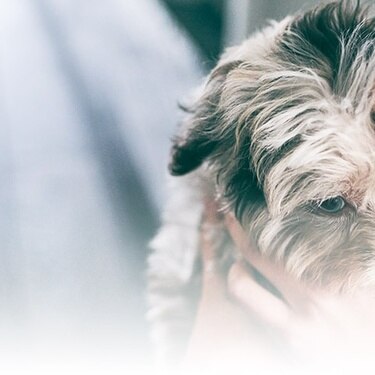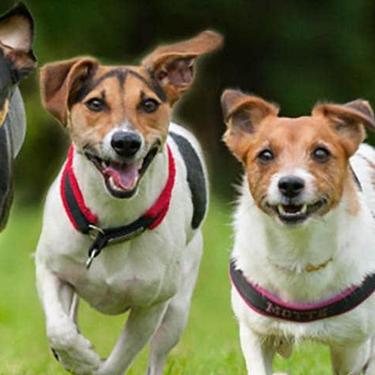
-
Find the right food for your petTake this quiz to see which food may be the best for your furry friend.Find the right food for your petTake this quiz to see which food may be the best for your furry friend.Featured products
 Puppy Food
Puppy FoodHill's Science Plan Puppy Multipack Wet Dog Food with Chicken & Beef are complete premium pet foods for growing puppies from weaning until 1 year old and for pregnant and nursing dogs. Your puppy will love these deliciously smooth and savoury minced loaves, formulated for balanced nutrition and overall health.
Shop Now Mature Adult Dog Food
Mature Adult Dog FoodHill's Science Plan Mature Adult Multipack Wet Dog Food with Chicken & Beef are complete premium pet foods for mature adult dogs from 7 years. Your dog will love these deliciously smooth and savoury minced loaves, formulated to deliver the appropriate amount of energy to support the needs of adult dogs.
Shop Now Adult Wet Dog Food with Beef
Adult Wet Dog Food with BeefHill's Science Plan Adult Multipack Wet Dog Food with Chicken, Beef & Turkey are complete premium pet foods for adult dogs from 1 year. Your dog will love these deliciously smooth and savoury minced loaves, formulated for balanced nutrition and overall health.
Shop NowFeatured products Light Adult Multipack Wet Cat Food with Chicken & Ocean Fish
Light Adult Multipack Wet Cat Food with Chicken & Ocean FishTender chicken chunks in gravy for cats, with L-carnitine and fewer calories for ideal weight management. Packed with high-quality protein, omega-6s, and vitamin E for shiny fur and healthy skin.
Shop Now Mature Adult Wet Cat Food with Chicken
Mature Adult Wet Cat Food with Chicken
Tender chicken chunks in gravy for mature adult cats. Made with easy-to-digest ingredients, high-quality protein for lean muscle maintenance and antioxidant vitamins C+E for optimal health.
Shop Now Adult Multipack Wet Cat Food with Beef, Ocean Fish & Chicken
Adult Multipack Wet Cat Food with Beef, Ocean Fish & ChickenTender chunks in gravy for cats, with high-quality protein to maintain lean muscle. With vitamin E and omega-3s & -6s for healthy skin and balanced minerals to support healthy vital organs.
Shop Now -
Dog
- Dog Tips & Articles
-
Health Category
- Weight
- Food & Environmental Sensitivities
- Urinary
- Digestive
- Joint
- Kidney
-
Life Stage
- Puppy Nutrition
- Adult Nutrition
- Senior Nutrition
Cat- Cat Tips & Articles
-
Health Category
- Weight
- Skin & Food Sensitivities
- Urinary
- Digestive
- Kidney
-
Life Stage
- Kitten Nutrition
- Adult Nutrition
Featured articles The Incredible Science Behind Your Pet's Microbiome
The Incredible Science Behind Your Pet's MicrobiomeLearn what your pet's microbiome is, how it contributes to your pet's gut and overall health, and why nutrition is important in maintaining healthy microbiomes.
Read More Show some love with wet foods: a great choice for pets with health issues
Show some love with wet foods: a great choice for pets with health issuesShow some love with wet foods: a great choice for pets with health issues.
Read More The Right Diet For Your Pet
The Right Diet For Your PetIn people, the right diet is very important. If you are eating the wrong way for your metabolism, activity level, age and lifestyle you could end up with health issues.
Read More -


Dog science is on the rise as more and more researchers devote their time to understanding the inner workings of our furry best friends. From dog biology to dog psychology, we understand more than ever about pups and their behaviour. Curious to see what science says about your dog? Keep reading to find out some of the more fascinating things we've uncovered.
Why Do Dogs Sleep So Much?
The amount of time a dog spends sleeping depends on many factors, including their age, size, breed, health and activity level. All dogs require significantly more sleep than humans, which has to do with the amount of REM sleep that dogs get. While humans spend about 25 percent of their sleep in REM cycles, which is the deepest and most restful stage of sleep, only about 10 percent of a doggy nap is spent in REM sleep. This means that they need to sleep longer to make up for the imbalance.
What Are Dogs Saying When They Bark?
Although dogs bark for a variety of reasons, biologists only recently discovered that their barking changes depending on the message. We now know that dogs have elasticity in their vocal chords, giving them the ability to slightly alter the sound of their barks to convey different meanings, says Scientific American.
Spectrographic images of dog barks have shown differences in timing, pitch and amplitude, all of which vary according to context. The same is true of growling. While it's not yet clear to researchers what these different barks and growls mean, experiments have shown that dogs react differently to other dogs' vocalisations depending on the context. For example, scientists recorded a dog growling over food and growling at a stranger. When they played back the "food growl" while offering another dog a treat, dogs were more hesitant to accept it than when they heard the "stranger growl". Other experiments showed that dogs and people are more likely to react to a dog's "stranger bark" than to other kinds of barking. More dog science research is needed to decode every woof and growl, but it's becoming clear that there is a more complex communication element to a dog's barking; they're not just doing it for fun.
How Fast Can Dogs Run?
How fast a dog can run depends largely on size, body shape, and leg length, as well as age, health and physical condition. The greyhound averages about 45 miles per hour as the world's fastest dog, with the fastest ever member of this breed clocking in at 50.5 miles per hour, says Wag!. While streamlined greyhounds and other fast breeds, such as whippets and Afghan hounds, appear to be built for speed, all dogs have the ability to make their bodies more aerodynamic when they run, either by flattening their ears to decrease wind resistance or pushing them back to avoid getting tripped up.
The way dogs move their legs also changes when they run. A walking dog moves their right legs and left legs together, while a running dog leaps with their front legs and back legs paired, allowing for more speed.
How High Can Dogs Jump?
While some dogs need help to get up and snuggle with you in your favourite chair, other dogs can easily leap fences. Similar to a dog's running ability, a dog's jumping ability depends largely on their size, strength, age, health and body condition. It’s been reported that the highest-jumping dogs can clear six feet, but what might be more impressive are the small breeds that can jump multiple times their body height. Another component of dog's jumping is how far they can leap. In dock-diving competitions, dogs are trained to run and leap in the water to see how far they can jump, with some achieving leaps of nearly 30 feet, according to The Labrador Site.


Tasty Tips
How Well Can Dogs See?
A dog's eyes are incredible and can see things that you and I can't. However, a dog's vision isn't necessarily better than a human's. According to Veterinary Vision, a dog's eyes are positioned on the side of their head, resulting in greater peripheral vision. However, their visual acuity (or their ability to focus on objects) is only about 20 to 40 percent of that of a human. This means that an object that could be distinguished from 20 feet by a dog could be distinguished from 90 feet by a human with 20/20 vision. For this reason, dogs rely on their other senses a great deal to help them navigate the world.
How Good is a Dog's Hearing Really?
A dog's hearing is no myth. In fact, it's an impressive biological advantage that has helped them for thousands of years. According to Petful, a dog can hear a sound up to four times further away than humans. Dogs have the ability to use their ears independently and change the direction in which they are listening, which helps them zero in on the sound they are listening for. They can do this because they have 18 muscles in their ears – three times as many as in the human ear. Dogs also have the ability to hear different frequencies, which is why things like dog whistles can affect them so much, even when you don't hear anything. Lastly, just like humans, dogs have the ability to practice selective hearing. So when you're calling your dog in from the garden and it seems like they're ignoring you, there's a good chance that they are!
Why Do Dogs Get So Excited to See Us?

When you come home at the end of a long day — or even after only an hour or two — chances are your dog is over the moon with happiness and excitement. Every! Single! Time! Dogs' over-the-top response to being reunited with their humans is one of the things we love so much about them. But why do they get so excited?
There are a few key factors involved, says io9. When studying brain scans of dogs exposed to certain smells, canine behavioural researchers found that the scent of a familiar human triggered the reward centres of the brain in a way that no other scent accomplished, suggesting not only that dogs know the difference between humans and other dogs, but that dogs genuinely love spending time with their humans.
Another study used a cognitive experiment designed for children seeing their mothers after an absence to measure the response of dogs reuniting with their owners, and found that the response is very similar. It's important to remember that dogs are social animals that don't like to be left alone. To them, our return signals relief from loneliness. Add all of that up, and it's no wonder that dogs can't contain their excitement to see their favourite people.
Why Are There So Many Different Kinds of Dogs?
Dogs are one of the most diverse species on the planet. The Kennel Club recognises a whopping 218 distinct dog breeds, not even including all the regional variations, mixed breeds and happy mystery mutts out there.
Scientists believe that dogs started diverging genetically from wolves around 27,000 years ago. All of their diversity in colour, shape, size, and temperament represents how their ancient hunter-gatherer genes have been passed down, manipulated and expressed throughout the generations.
Selective dog breeding has happened for almost as long as dogs have been domesticated. However, this practice exploded during the 19th century as people began creating different breeds for aesthetic reasons and novelty, rather than traits that were more useful for hunting or herding. As this practice continues today, the number of dog breeds and the diversity among the species continues to increase.
There's no doubt that dogs are special, and so is the bond we share with them. As the field of dog science continues to grow, we're continuing to discover more and more about our favourite furry companions. But there's one thing we don't need to rely on science to tell us, and that's how awesome our dogs are — each and every one of them!


Jean Marie Bauhaus is a pet parent, pet blogger, and novelist from Tulsa, Oklahoma, where she usually writes under the supervision of a lapful of fur babies.
Related products

Hill's Science Plan Mature Adult Multipack Wet Dog Food with Chicken & Beef are complete premium pet foods for mature adult dogs from 7 years. Your dog will love these deliciously smooth and savoury minced loaves, formulated to deliver the appropriate amount of energy to support the needs of adult dogs.

Hill's Science Plan Hypoallergenic Adult Wet Dog Food with Salmon is a complete premium pet food for all adult dogs from 1 year. This savoury tinned loaf is specially formulated for dogs with delicate skin and stomachs. It features a single novel animal protein source and is grain-free.

Hill's Science Plan Adult Multipack Wet Dog Food with Chicken, Beef & Turkey are complete premium pet foods for adult dogs from 1 year. Your dog will love these deliciously smooth and savoury minced loaves, formulated for balanced nutrition and overall health.

Hill's Science Plan Puppy Multipack Wet Dog Food with Chicken & Beef are complete premium pet foods for growing puppies from weaning until 1 year old and for pregnant and nursing dogs. Your puppy will love these deliciously smooth and savoury minced loaves, formulated for balanced nutrition and overall health.
Related articles

How, when and what to feed your new puppy is an important decision, learn more about the things to consider for feeding your puppy.

Learn effective tips for feeding a dog that's a picky eater and ensure proper nutrition for a finicky eater. Discover tips for pet parents at Hill's Pet UK.

Many human foods are dangerous to dogs. Read about 5 of the worst toxic food offenders that can kill your dog - and how much it takes to hurt them.

Learn about the potential health risks of a raw diet for dogs and why they aren't the best option for your pup or you.

Put your dog on a diet without them knowing
Our low calorie formula helps you control your dog's weight. It's packed with high-quality protein for building lean muscles, and made with purposeful ingredients for a flavourful, nutritious meal. Clinically proven antioxidants, Vitamin C+E, help promote a healthy immune system.
Put your dog on a diet without them knowing
Our low calorie formula helps you control your dog's weight. It's packed with high-quality protein for building lean muscles, and made with purposeful ingredients for a flavourful, nutritious meal. Clinically proven antioxidants, Vitamin C+E, help promote a healthy immune system.

